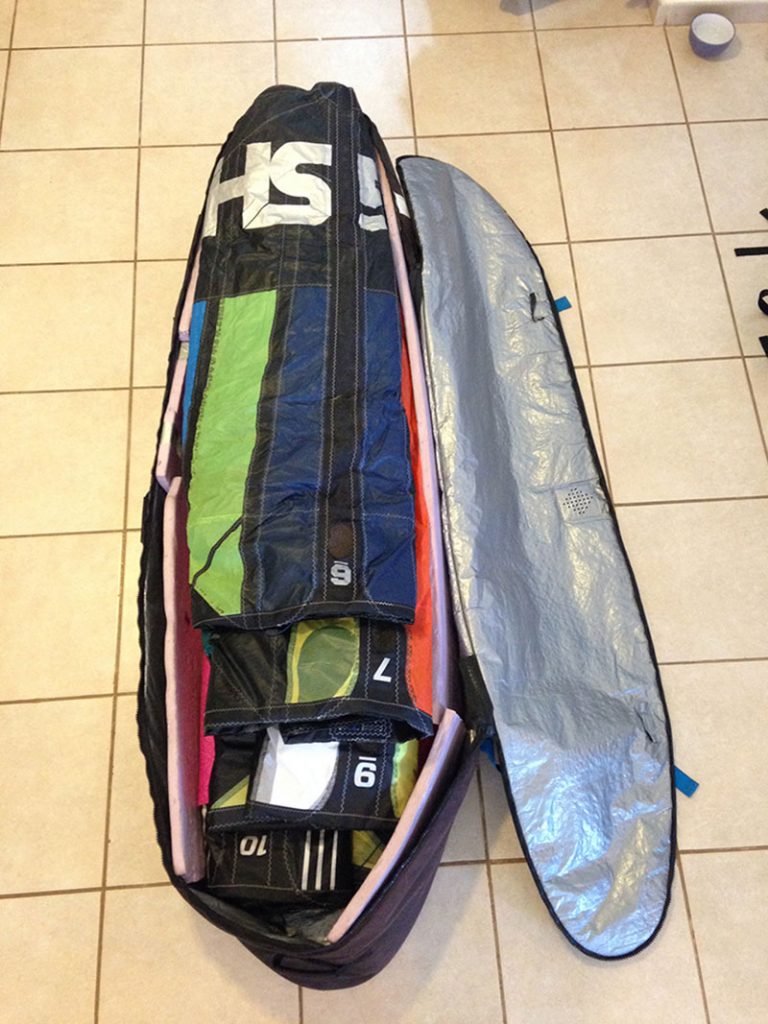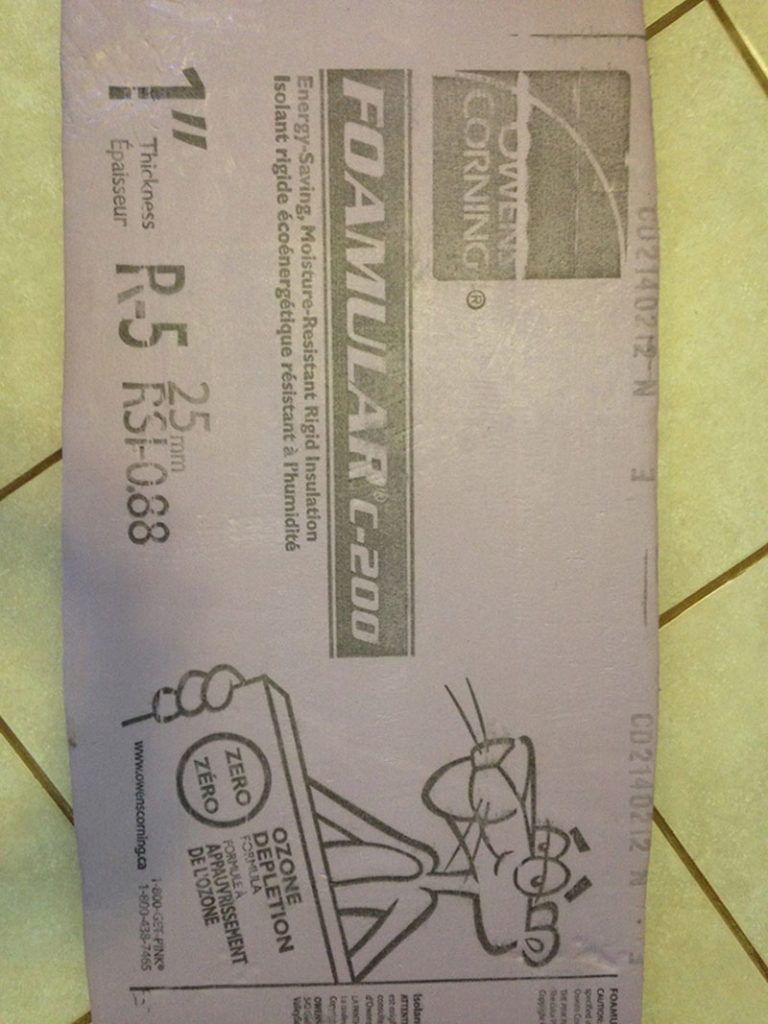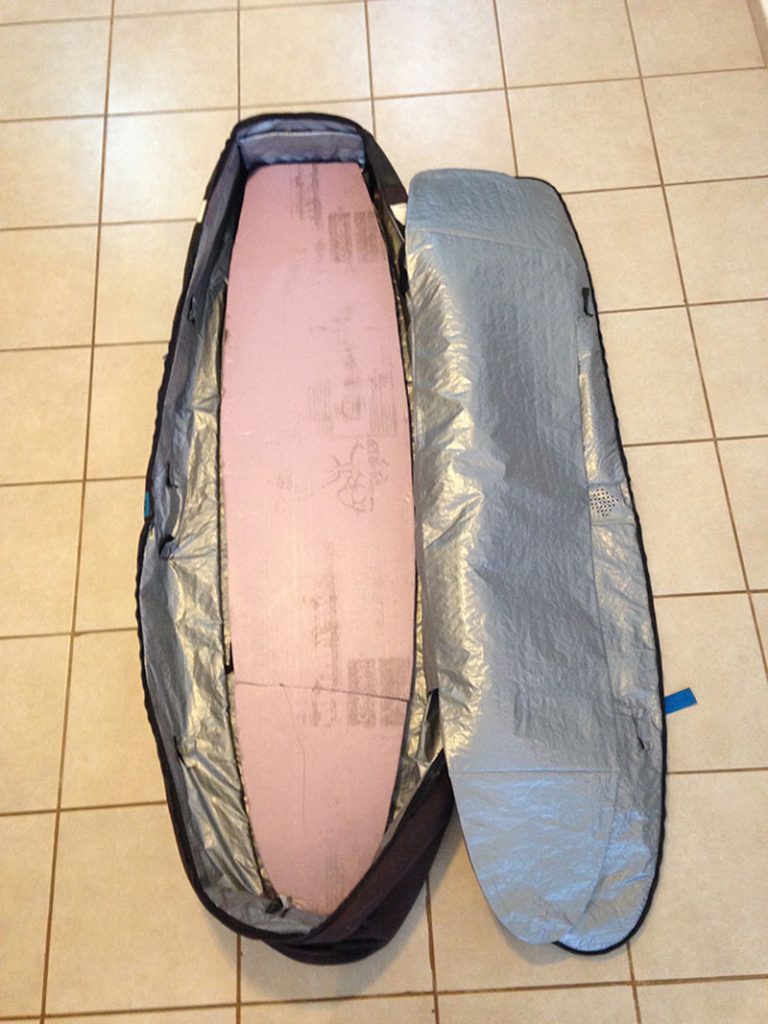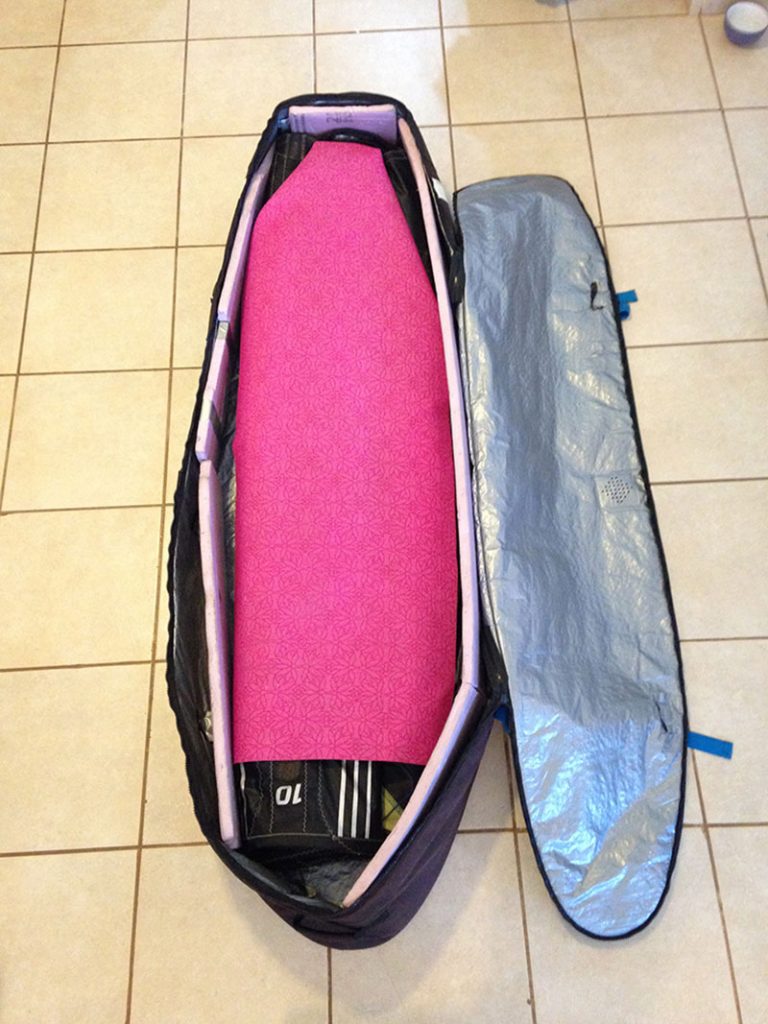Every summer for the last five years when King of the Air Kevin Langeree comes to Cabarete for our annual kite camps, when he unpacks his gear, invariably his surf board is broken. No joke, every year. And every year I run it off to Susi Mai’s dad Plinsi for an emergency repair. Which he does with perfect German precision.
How to keep your gear safe when the airlines play toss the surf bag game is the problem of every surfer who travels the world chasing waves. Here’s a solution to that problem.
I’ve been traveling the world with the same customized Mystic board bag for the last five years. In those years I haven’t had even so much as a breath mark on any of my gear. I too was tired of trying to figure out ways to securely transport my gear, but they all eventually failed in one way or another. I’d cut pool noodles length wise and duck tape them to the circumference of the board. They’d always tear off in transit, and I’d end up with a ding in my board. I tried wrapping the boards in cardboard, but once wet, card board turns to papier-mâché puke. I’d wrap all my kite clothes around my boards and then bind it all with packing tape. Not so great for the clothes. Duck tape chic later in the bar.
Finally I channeled my inner engineer and decided to find a real solution to the problem that plagues all kite surf travelers, build a bomb proof board bag. I succeeded, and here’s how I did it.
1. The Bag
Regardless of the bag you choose, what is important is that the seams, zippers and corners line up to make 90 degree corners. Personally, I like my older version of my Mystic Pro Surf bag because of the wheels, and it holds lots of gear. Once full, and reinforced as you’ll read, it becomes a solid box that will not bend in the middle when picked up from the ends. This allows it to be lifted from the front handle and easily rolled through airports. While traveling I put my clothing bag on the board bag at the rear just over the wheels so there is no carry weight, just drag weight. Weight you barely notice once rolling, and I cruise through airports.

2. The Secret Of Bomb Proofing
High density foam board for home insulation is the secret. In cold climates like Canada you can go to any big hardware store to easily find these panels. The foam comes in 4’ x 8’ foot panels in different thicknesses. I use 1’ thick foam board. One panel is enough. If you’re concerned about weight, it maybe adds 2lbs pounds to your total weight. Super light.

3. Cut To Measure.
Put the foam board on the floor. Place your board bag on top, and trace the outline of the bag onto the foam with a sharpie. As the final cut foam piece will go inside the board bag and you’ve just traced the outside, take off about one inch around the perimeter to make sure your blank will fit in the bottom board bag.

** Very important. Trace the board bag, not the surfboard that is going in the bag! You’re making your bag bomb proof for any size and shape of board. The board size is irrelevant.
Cutting. Use a new blade box cutter, and make sure you place the foam on concrete or another hard surface that you don’t have to worry about scratching. DO NOT do this on your living room floor. Your knife will slice through the foam like butter, cutting what ever flooring is under the foam.
Once you’ve fine tuned the shape and fit of your base foam, use it as a template for your top piece. Trace your perfectly fitted foam onto your new foam for your 2nd piece.
Sides. You should have enough material remaining to make side walls for the bag. Measure the interior height, not length, of your bag so you can make side wall reinforcements. With the bag flat on the ground measure up until just before the zipper. Leave enough wiggle room for the zipper to close easily. Cut to almost the length of the bag.
Nose and tail. Often board bags get stacked vertically in airports. When this happens, the board sometimes bottoms out inside the bag and a crushed tail or nose happens. Cut pieces of foam the width of the area, and double the layer of foam on these points to make sure no matter how hard the bag is slammed down, the board is always on foam.

4. Layers
I place my first foam under the padding sleeve that comes with the board bag. Then I roll the sleeve onto the foam, and put my first board, inside it’s own day bag.

I then layer the biggest kite I’m taking on that trip.

This is following by my 2nd surfboard, which is then wrapped by my yoga mat.


I continue with the rest of my kites, biggest to smallest. At the top of the pile, near the nose along the sides, I put one bar on either side of the bag.

I pack kites biggest to smallest so that when I close the bag at the nose of the bag there will be lots of empty space for things like fins, wax, etc…
At the base of the bag, I stack my harness vertically so that it acts as yet another layer of protection to the tails of my boards.

When all is layered, I place my top piece of foam and zip up my bag. If the foam pieces are cut to measure, your zippers should line up at perfect angles and have little to no stress on the locking zip. Gone are the days of fearing your board bag zipper will fail in transit and your gear will spill out. When all the foam lines up, you’ll have a reinforced coffin on wheels.

As can be seen, I broke the nose of my top plate so that I could store easy to access items in the nose of the bag without having to completely unzip the bag to access its contents.

With this packing method I can comfortably fit two surf boards, 2 bars, harness and 4 kites along with fins and other gear, and it all fits like a glove. For sure you’re going to pay oversized luggage fees for this bag. But packed this way you should still be under the extra fees of overweight luggage as well.
Once finished you will have a bomb proof board bag. Kick it as hard as you can, and you’ll only break your toe. I’ve actually even used it as a bed on especially long layovers where I’ve been unable to check-in for my flight before the next day. Push it up into the corner, prop your clothes bag on top against the wall for a giant pillow and snooze away on the board bag. I’ve done it more than once.

As I mentioned it’s been five years traveling around the world with this same set up; that’s why the bag and foam looks so rough. But in five years not one breath on my gear.
Time to customize another bag to last five more years.















